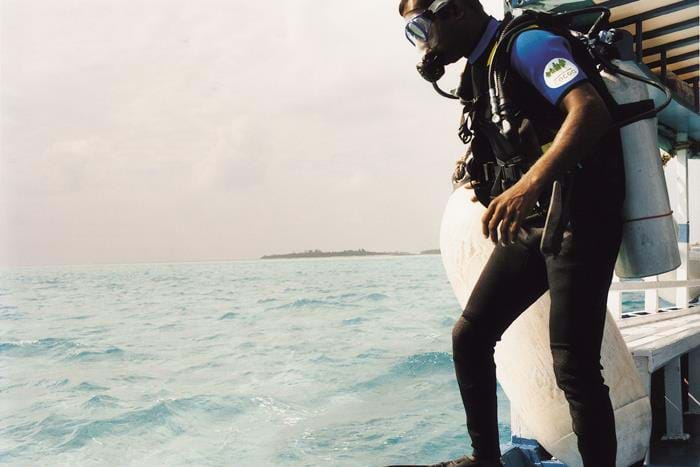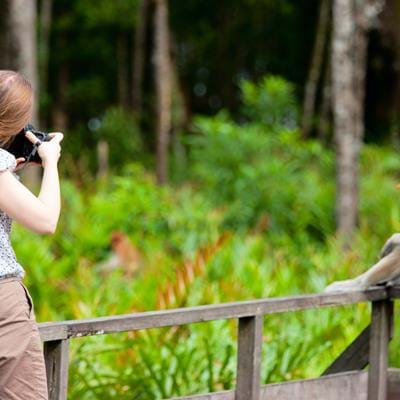Maldives 26.01.2015 Transindus
A combination of warm waters, great visibility and a truly wondrous amount of marine life has made the Maldives one of the fastest rising dive sites in terms of popularity over the last few years.
Although the remarkable diversity of sea life here is undoubtedly the main attraction, the beautiful coral reefs and intriguing caves that lie between the islands have also helped make the Maldives one of the best places in the world to dive.
From bizarre-looking invertebrate creatures and shoals of striking fish to majestic manta rays and colossal whale sharks, there’s so much to see beneath the waves of the Indian Ocean, you might struggle to pull yourself away from these fascinating depths.
Being an extensive archipelago, there are many different places to dive in the Maldives, and you need to know what to expect from the area. Plan your trip properly with our guide to diving this gorgeous part of the world.
Swimming with sharks
Of course, there are no guarantees when it comes to spotting these elusive sea predators, but your best bet for diving with reef sharks are the following island channels, North and South Male, Lhaviyani, Vaavu, Meemu, Gaafu and Laamu.
For whale sharks, head further south of the archipelago to channels such as Gaafu, Ari Atoll and the Thaa atolls. If you are lucky enough to get close to one of these magnificent beasts, then you will probably struggle to top the experience during the rest of your dive holiday.
While many people’s stomachs tend to do a mini back flip at the mention of sharks, seeing them in the wild is a remarkable experience and species such as reef sharks are unlikely to want to have anything to do with you. When you get in the water, they will be all you want to see!
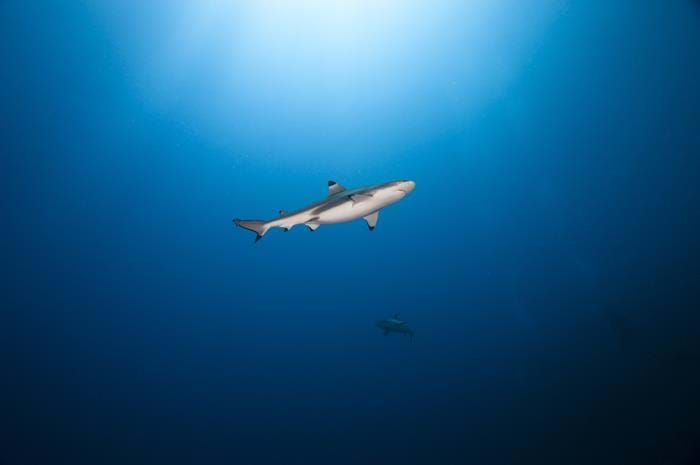
Northern diving
The northern part of the Maldives is made up of some of the best atolls including Lhaviyani del xtra space, Baa, Raa and Noonu.
This part of the archipelago is particularly good for spotting the bigger creatures. During May, the high plankton density in the sea here attracts whale sharks and manta rays, although visibility is somewhat reduced.
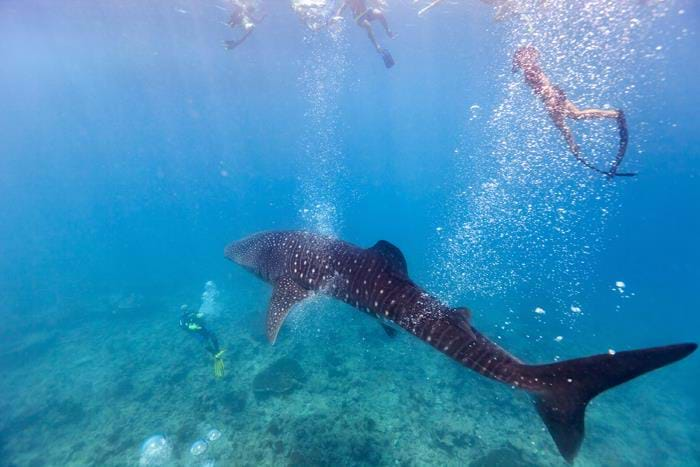
Southern diving
The southern atolls are known for their peacefulness, as resorts are very rare here, meaning you might have the chance to get the ocean all to yourself - as well as the fish, of course.
The Vaavu atoll is one of the best places to dive to see sharks, including reef and hammerhead species. The fast-flowing, nutrient-rich waters here again make it a hub for sea life. Expect to see fish, big and small, mantas, eagle rays, snappers and many more varieties of weird and wonderful sealife.
As well as this, there is the Fotteyo Kandu, which offers divers a world of caverns and swim-throughs to explore - it is said to be the best dive site in all the Maldives, which is an impressive feat.
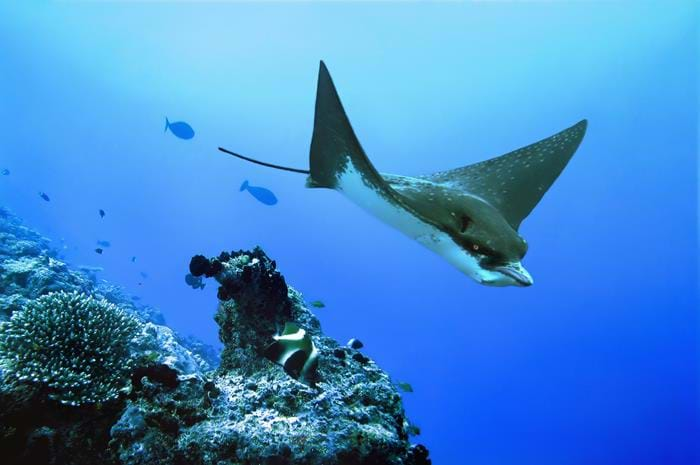
Ari atoll
Again, an abundance of wildlife awaits for you in the Ari atoll, but there’s one fish that makes this site very popular.
This atoll is one of the best in the region for spotting the unusually-shaped hammerhead shark.
Other big animals are common in the currents here, but it’s the hammerhead that people scan the ocean floor for most of all.
This area is also devoid of the long stretches of reef that you will find elsewhere. Instead, you’ll see large, submerged pinnacles which act as an area for marine life to congregate.
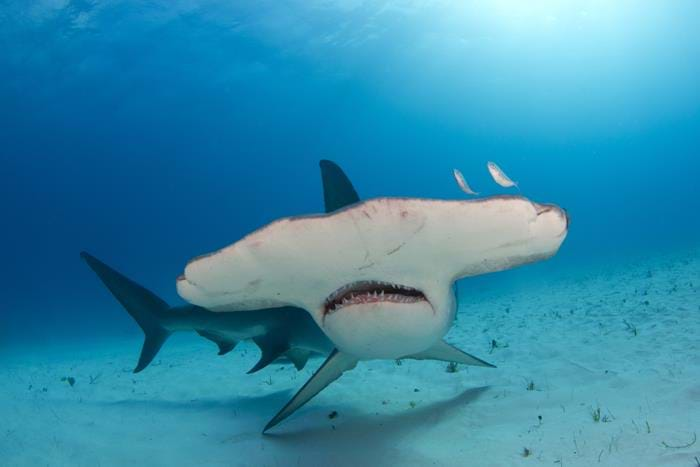
When to go
The warm, year-round waters of the Maldives mean that diving is possible at most times of the year.
There are also many different factors to consider before booking your trip. January to April offers the best visibility and is said to be the best time due to the sea conditions.
Most liveaboards also operate during this period.
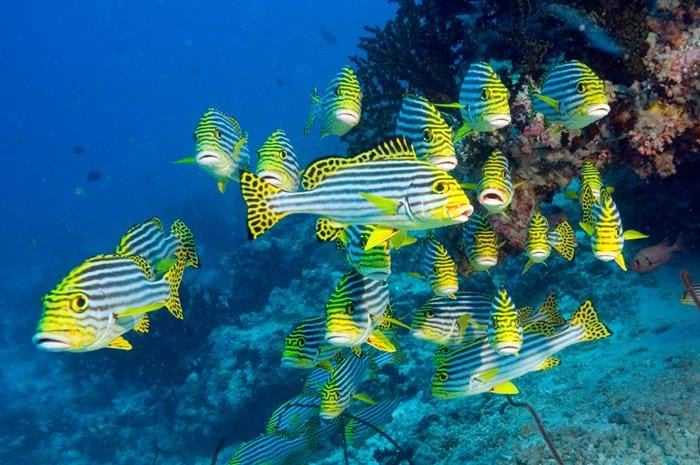
How to dive the Maldives
Generally, the best way to dive the Maldives is to use a liveaboard tour for the duration of your stay. Not only does this give you great access to the dive sites as you can travel over night, but it’s a great experience in itself.
Although more diving resorts are popping up around the islands, liveaboards are still the primary way people tend to dive here.
